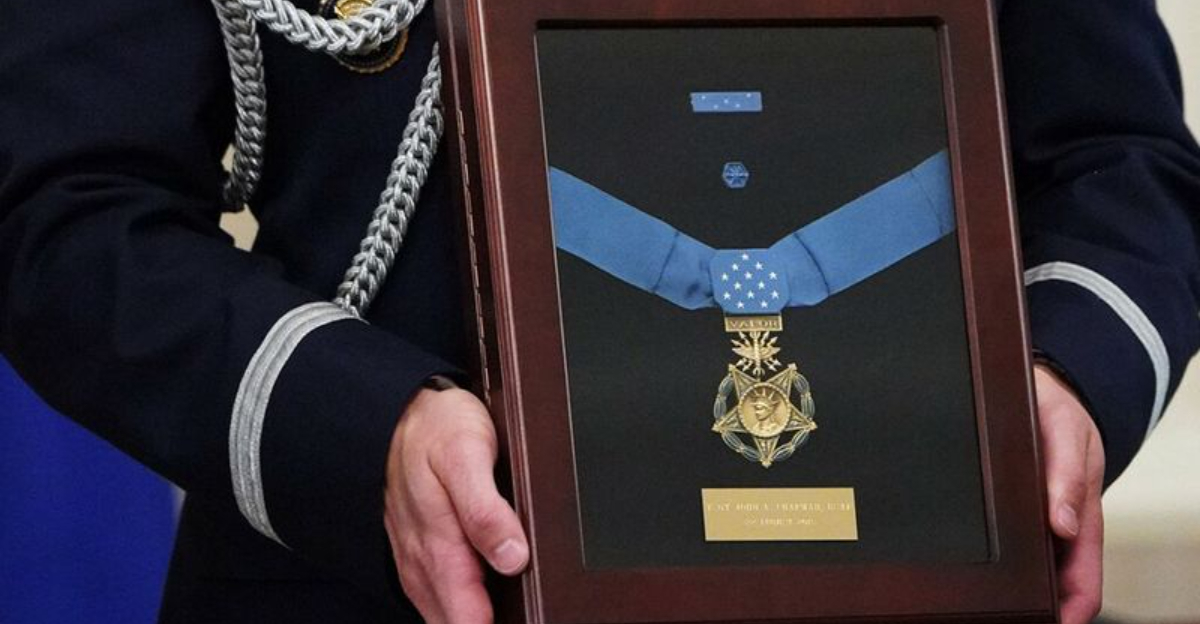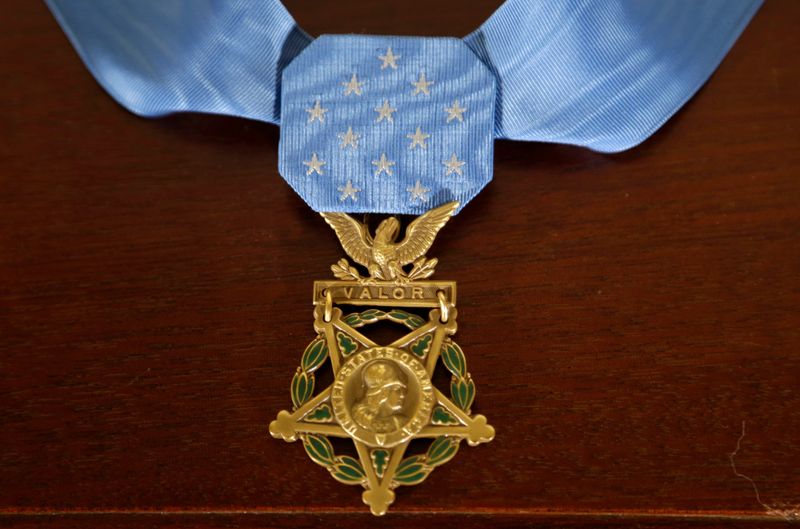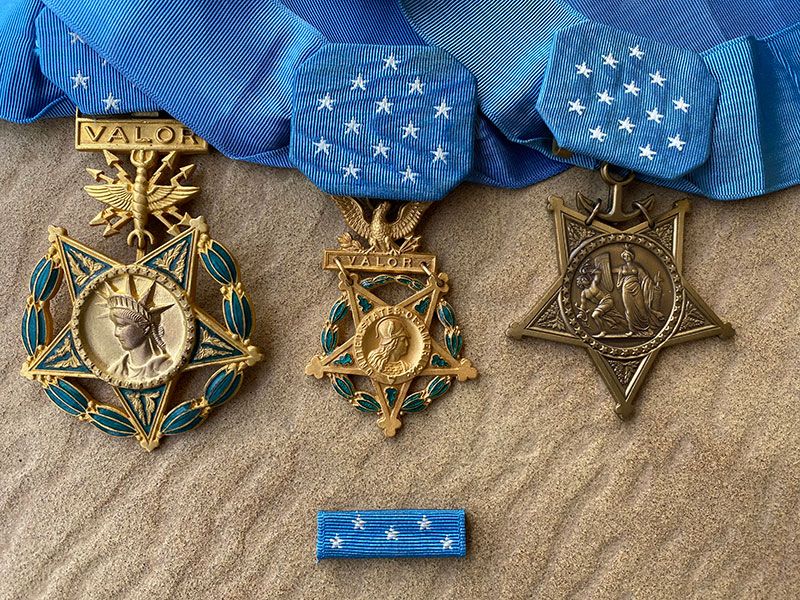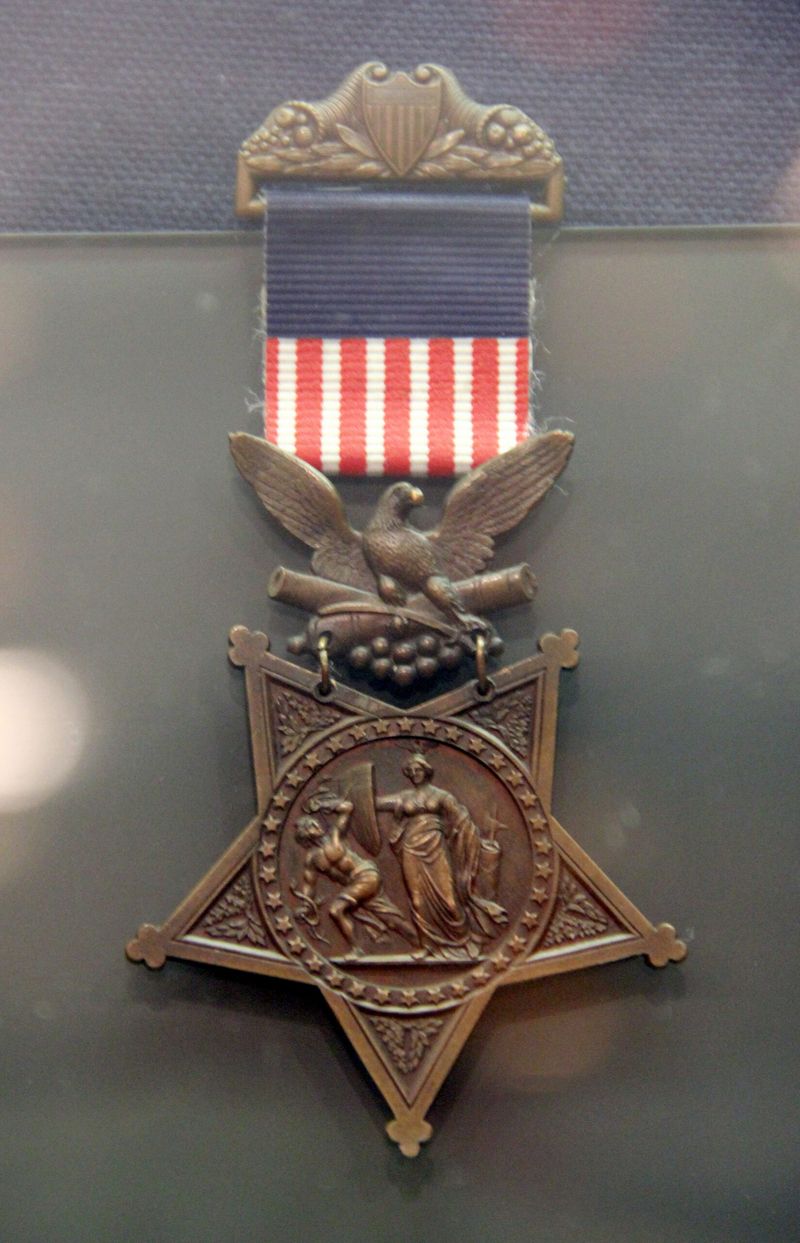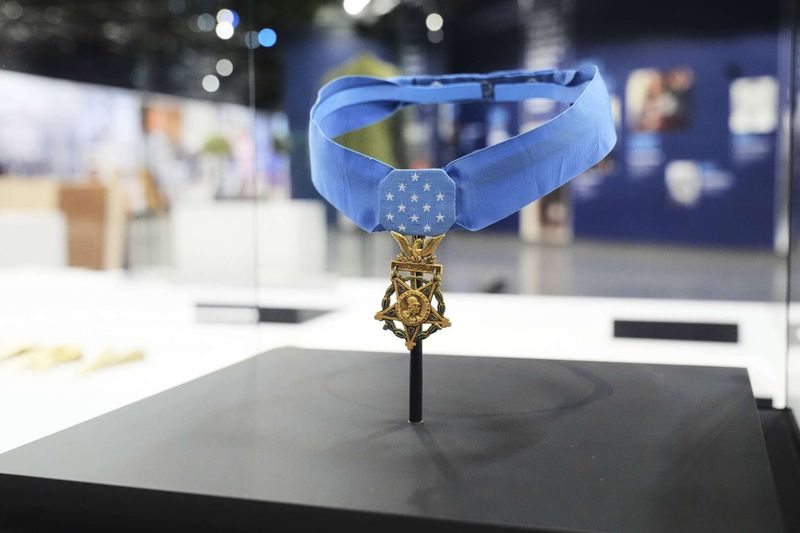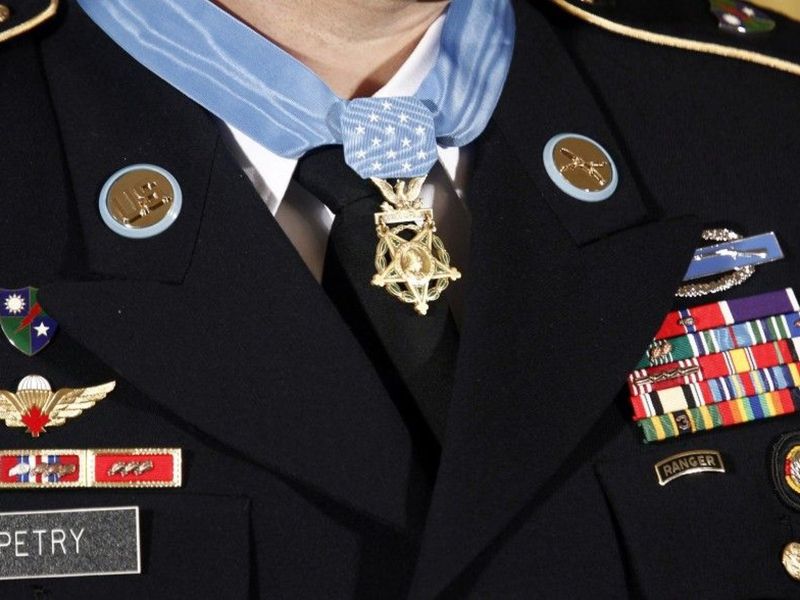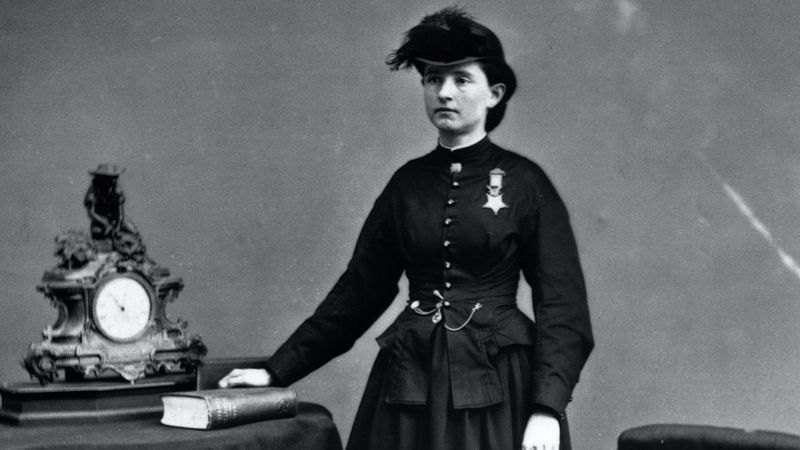The Medal of Honor stands as America’s highest military decoration, awarded only for the most extraordinary acts of valor.
Since the Civil War, this prestigious medal has recognized service members who went above and beyond the call of duty, often sacrificing their lives for others.
Behind this small medal lies incredible stories of courage that reveal the true meaning of service and sacrifice.
1. America’s Highest Military Honor
No decoration in the United States military ranks higher than the Medal of Honor. Presented by the President in the name of Congress, it recognizes acts of valor that go far beyond the call of duty. Recipients have typically risked or sacrificed their lives in extraordinary ways. Many threw themselves on grenades to save comrades or held off enemy forces alone while others escaped. The medal’s prestige comes not just from its rarity but from the profound selflessness it represents – choosing others’ lives over one’s own.
2. Three Distinct Designs
Contrary to popular belief, there isn’t just one Medal of Honor. The military has three distinct versions, each with unique designs reflecting their branch’s heritage. The Army version features Minerva, the goddess of wisdom and war. Navy and Marine Corps recipients receive a medal depicting Minerva repulsing Discord, while the Air Force medal showcases the Statue of Liberty. Though different in appearance, all carry equal weight and honor. Coast Guard members can receive the Navy version, while the Space Force hasn’t yet established its own design.
3. Civil War Origins
Born amid America’s bloodiest conflict, the Medal of Honor first appeared during the Civil War. President Lincoln signed the Naval version into law in December 1861, followed by the Army version in July 1862. Initially created to boost sagging morale among Union troops, the medal quickly became associated with extraordinary battlefield heroism. The first recipients were soldiers who captured Confederate battle flags – dangerous missions that often meant charging directly into enemy lines. From these humble beginnings emerged America’s most revered military tradition.
4. Rarer Than Diamonds
With fewer than 3,600 awarded in over 160 years, the Medal of Honor remains one of the world’s rarest decorations. For perspective, about 16 million Americans served in World War II, yet only 472 received the Medal of Honor. During Vietnam, only 247 were awarded among 2.7 million service members. Recent conflicts show even greater rarity – only 18 for Afghanistan and Iraq combined. This scarcity isn’t by accident. The medal’s standards are deliberately kept extraordinarily high, ensuring it remains the ultimate recognition of military sacrifice.
5. The Ultimate Sacrifice
More than half of all Medal of Honor recipients never lived to receive their award. These posthumous presentations reflect the medal’s connection to actions of the highest risk and sacrifice. During the ceremony, the President typically presents the medal to the family – parents, spouses, or children left behind. The citation is read aloud, often describing moments of split-second decision where the recipient chose others’ lives over their own. This sobering reality underscores why the medal carries such emotional weight for military families and the nation.
6. Exclusively American
Unlike other U.S. military awards that can be given to foreign allies, the Medal of Honor remains exclusively for American service members. This restriction maintains its special place in American military tradition. Foreign soldiers performing similar acts of valor typically receive their nation’s highest award or, occasionally, the Distinguished Service Cross from American authorities. Even the most heroic civilian cannot receive this medal – it remains solely for those who serve under the American flag. This exclusivity reinforces its status as the pinnacle of American military recognition.
7. Rigorous Verification Process
Behind every Medal of Honor lies an exhaustive investigation process. Multiple eyewitnesses must verify the action in detailed statements, followed by reviews at every command level. The nomination travels through the military chain, where officers scrutinize every detail. Many nominees are downgraded to lesser awards when the evidence doesn’t meet the extraordinary standard required. This verification can take years, sometimes decades. The rigorous process ensures the medal’s integrity remains unquestionable – when someone wears the Medal of Honor, their actions have withstood the most intense scrutiny possible.
8. Saluted By All Ranks
Military protocol normally requires lower-ranking personnel to salute higher-ranking officers. The Medal of Honor flips this tradition on its head. A private wearing the Medal of Honor receives salutes from everyone – including generals and admirals. This extraordinary reversal of military courtesy speaks volumes about the medal’s significance in military culture. When Medal of Honor recipient Audie Murphy (a former private) visited the Pentagon after World War II, generals would stand and salute him first, regardless of his lower rank, demonstrating how this small blue ribbon commands universal respect throughout the armed forces.
9. Lifetime of Benefits
Beyond the medal itself, recipients receive substantial lifelong benefits. A special pension exceeding $1,500 monthly (tax-free) provides financial security regardless of rank or time served. Recipients enjoy special military ID cards granting access to military facilities worldwide. Their children receive special consideration for military academy appointments. When traveling on military aircraft, they’re assigned the same priority as high-ranking officers. Should they choose, recipients are guaranteed burial plots at Arlington National Cemetery with full military honors – a final recognition of their extraordinary service to the nation.
10. Protected By Federal Law
Federal law fiercely protects the Medal of Honor’s integrity. Wearing, manufacturing, selling, or falsely claiming the medal without authorization can result in imprisonment and substantial fines. These strict protections stem from the Stolen Valor Act, designed to preserve the medal’s sanctity. Collectors must obtain special documentation proving any medal in their possession was legally acquired. The FBI has conducted sting operations targeting fraudulent medals, and maintains a database of legitimate recipients. This legal shield ensures the medal remains untarnished by those who would diminish its profound meaning through fraud or profit.
11. Justice Delayed, Not Denied
Sometimes recognition comes decades after the heroic act. Racial bias, lost paperwork, or witness unavailability has delayed many deserving medals, particularly for minority service members. In 2014, President Obama awarded 24 long-overdue Medals of Honor to Hispanic, Jewish, and African-American veterans after a congressional review revealed systematic discrimination. Some recipients had waited over 50 years for proper recognition. These delayed awards demonstrate both historical shortcomings and the nation’s ongoing commitment to honoring extraordinary valor regardless of when it occurred – proving it’s never too late for justice.
12. Dr. Mary Walker’s Unique Honor
Dr. Mary Edwards Walker stands alone as the only woman to receive the Medal of Honor. As a Civil War surgeon, she repeatedly crossed battle lines to treat wounded civilians, eventually being captured and imprisoned by Confederate forces. Her medal’s journey proved as remarkable as her service. Initially awarded in 1865, it was rescinded in 1917 when eligibility criteria changed. Refusing to return it, Dr. Walker wore it until her death. President Jimmy Carter finally restored her medal posthumously in 1977, recognizing her extraordinary courage and determination as both a physician and a pioneer for women in military service.
13. Preserving Valor’s Legacy
The National Medal of Honor Museum in Arlington, Texas, serves as the official repository for recipient stories and artifacts. This modern facility uses interactive displays to bring heroic actions to life for visitors. Meanwhile, the Medal of Honor Society, composed exclusively of living recipients, works to document each medal’s history. Their oral history project captures first-hand accounts before they’re lost forever. Together, these institutions ensure future generations understand the profound meaning behind each medal – not just as military decorations, but as powerful symbols of the highest human capacity for courage and selflessness.
14. Honoring the Families Left Behind
When a service member receives the Medal of Honor posthumously, their sacrifice extends to the family who must live without them. The military recognizes this through special honors for these families. Gold Star lapel pins identify immediate family members of the fallen. Children of recipients receive special consideration for military academy appointments. Spouses and parents often attend military ceremonies as honored guests. At national events like Presidential inaugurations, Medal of Honor families receive reserved seating alongside dignitaries – a lasting acknowledgment that their loved one’s sacrifice continues to be honored by a grateful nation.
15. Beyond Bravery: The Essence of Selflessness
At its core, the Medal of Honor represents something deeper than military achievement. Every citation reveals a moment when someone chose others over themselves – often with full knowledge of the likely consequences. Many recipients describe their actions not as heroic but as necessary. “I couldn’t leave them behind” or “Anyone would have done the same” are common refrains, revealing profound humility alongside extraordinary courage. This combination of selflessness and sacrifice reveals why the medal transcends military recognition to become a powerful symbol of humanity’s highest ideals – even amid war’s darkest moments.
